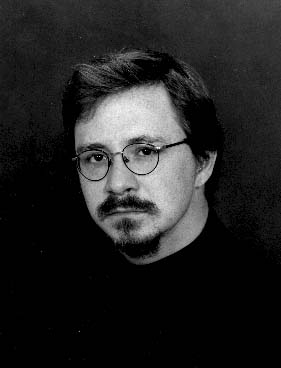|
Back to On the Road with John Tarleton
Gulf War I: Memories of Death and Mayhem
by John Tarleton Charles Sheehan-Miles finished basic training for the U.S. Army in August of 1991. Two weeks later he was deployed in Saudi Arabia with the 24th Infantry Division. He was 18. Raised in Atlanta, Sheehan-Miles comes from a long line of military men dating back to the Revolutionary War. He was eager to serve and protect his country, and spent eight months in the Persian Gulf theatre, history’s most toxic battlefield. Sheehan was exposed to smoke from hundreds of oil well fires. Hundreds of thousands of other U.S. troops were exposed to depleted uranium from their own army's munitions and to chemical warfare agents including sarin, cyclosarin and mustard gases when large stockpiles of Saddam Hussein’s biological and chemical weapons were destroyed. Thousands of soldiers were also injected with experimental anthrax vaccines. In the war’s final days, Sheehan-Miles machine-gunned fleeing Iraqi soldiers who had caught fire when one of their tanker trucks exploded near his unit. The experience haunted him and in December 1992 he was discharged from the Army as a conscientious objector.
148 American soldiers — as well as 150,000 Iraqis — were killed in the first Gulf War. 9,600 more Gulf War vets have died since then, according to an September 2002 report by the Department of Veterans Affairs. Sheehan-Miles suffered lung and ear infections for the first couple of years after he returned home. Many of his former comrades-in-arms suffered more debilitating Gulf War-related illnesses that the government took years to acknowledge. Of the 697,000 troops who served in the Gulf War, 156,000 (or 22.3%) currently receive assistance for service-related medical disabilities. “It was a toxic battlefield and we were exposed to a lot of junk…There was not necessarily anything mysterious about all this,” said Sheehan-Miles, who also founded the National Gulf War Resource Center (NGWRC) in 1995. Now 31, he lives in Reston, Virginia with his wife and two small children. Sheehan-Miles has watched with increasing concern in recent months as the Bush Administration calls for war. He and other vets are concerned that a new generation of American soldiers will be exposed to similarly toxic battle conditions while safeguards remain inadequate. 62 percent of the U.S. Army's gas masks and up to 90 percent of the machines it uses to detect invisible chemical arms attacks may be defective, according to an Army Audit Agency study obtained by the Deseret News through the Freedom of Information Act. Furthermore, the Army is uncertain about the condition of most equipment it would need to defend against chemical and biological attacks just as America prepares for possible war with Iraq over that country's development of such weapons. “We’re hurdling headlong into a war with Iraq without adequately addressing the mistakes of the past,” says Steve Robinson, NGWRC executive director. While the NGWRC doesn’t take an official position on the war, Sheehan-Miles and a couple of his buddies have started a web site (www.veteransforcommonsense.org) that is meant to raise public awareness of the dangerous course U.S. leaders are charting. “I think the military has become very remote to us. We now have a small, professional army that goes out and fights our wars for us,” Sheehan-Miles notes. “But the cost of going to war is far more than most people realize.” LINKS:
Veterans for Common Sense
Back to On the Road with John Tarleton
|
 “I had nightmares for years about the incident,” said Sheehan-Miles, who has since written Prayer at Rumayla, a critically-acclaimed novel about his Gulf War experiences. “The human reaction to a situation like that is to grab a fire extinguisher or to throw a blanket on someone.”
“I had nightmares for years about the incident,” said Sheehan-Miles, who has since written Prayer at Rumayla, a critically-acclaimed novel about his Gulf War experiences. “The human reaction to a situation like that is to grab a fire extinguisher or to throw a blanket on someone.”